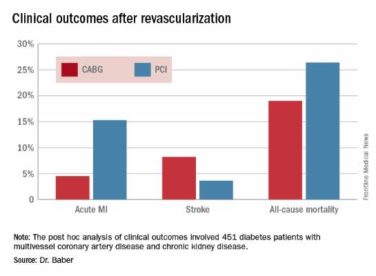AT 14-ICML
LUGANO, SWITZERLAND (FRONTLINE MEDICAL NEWS) – Tazemetostat, a first-in-class experimental agent that inhibits an oncogenic protein, shows efficacy in patients with heavily pretreated, relapsed/refractory follicular lymphoma (FL) and diffuse large B cell lymphoma (DLBCL), interim results from a phase II study suggest.
Among patients with relapsed/refractory FL who had mutations in EZH2 (enhancer of zeste homolog 2), a member of a family of proteins that are involved in epigenetic gene silencing, the overall response rate (ORR) was 92%, reported Franck Morschhauser, MD, PhD, of the University of Lille, France.
Tazemetostat is an oral inhibitor of both the wild-type and mutated forms of the gene encoding for EZH2, a histone methyltransferase. The drug shows significantly more activity against the mutated form of the gene than the wild type, but some patients in the trial with the wild-type gene have had complete responses, Dr. Morschhauser said at the International Conference on Malignant Lymphoma.
“What we observed is a four-fold increase in [ORR in] follicular lymphoma-mutated patients compared to wild-type patients, a two-fold increase in DLBCL patients mutated compared to wild-type patients,” he said.
“But if we had focused [only] on the actionable mutation, we would have missed those other complete responders in the wild-type setting,” he added.
EZH2, an epigenetic regulator of gene expression, had been shown in preclinical studies to play an important role in multiple forms of cancers, and activating mutations of EZH2 have been shown to be oncogenic drivers in approximately 20% of FL and germinal center B-cell–like DLBCL, Dr. Morschhauser explained.
EZH2 has also been shown to be over-expressed in leukemia-initiating cells in patients with chronic myeloid leukemia, and EZH2 inhibitors are being explored as a possible therapy for patients with chronic myeloid leukemia that has become resistant to tyrosine kinase inhibitors.
Large multicenter study
Dr. Morschhauser reported interim results from a global, multi-center open-label study of tazemetostat in six cohorts of patients with relapsed/refractory FL (two monotherapy cohorts of 45 patients each) or DLBCL (three monotherapy cohorts of 60 patients each). A sixth cohort consisting of 70 patients with DLBCL treated with tazemetostat and prednisolone was added in 2017.
In the ongoing trial, patients receive oral tazemetostat 800 mg twice daily until disease progression or withdrawal from study, and are being followed for ORR, progression-free survival, overall survival, duration-of response, safety, and pharmacokinetics.
The longest follow-up at the time of data cutoff was approximately 18 months. Among 13 evaluable patients with FL with EZH2 mutations, the ORR was 92%, including one complete response (CR) and 11 partial responses (PR). In contrast, the ORR for 54 patients with FL and wild-type EZH2 was 28%, consisting of three CRs and 11 PRs. One patient with mutated EZH2 and 23 with wild-type EZH2 had stable disease.
Among 17 patients with DLBCL and EZH2 mutations, the ORR was 29%, consisting of 5 PR. For 119 patients with wild-type EZH2, the ORR was 15%, consisting of 10 CR and 8 PR. Six patients with mutations and 22 with wild-type EZH2 had stable disease.
Among the patients with FL, 75% had significant reduction in tumor burden.
The time to response ranged from 2 months to 1 year, with a median of approximately 4 months.
The variability in time to response “makes it a little bit tricky to calculate response duration,” Dr. Morschhauser said.
The drug had a “favorable” safety profile, with treatment-related adverse events of grade 3 or greater in more than 5% of patients including thrombocytopenias in 6% of patients, anemias in 4%, and neutropenias in 6%. Treatment-emergent adverse events leading to dose reductions occurred in 4% of patients, and those leading to drug discontinuation or study withdrawal occurred in 12% of patients.
In a retrospective analysis , the investigators performed molecular profiling studies using next-generation sequencing to look for predictors of response to tazemetostat. They found that patients most likely to respond to tazemetostat were those with activating mutations in EZH2 and MYD88. In contrast, patients with mutations HIST1H1E or MYC were not likely to respond.
Thomas E. Witzig, MD, of the Mayo Clinic in Rochester, Minn., the invited discussant, said that the study is important because “it provides proof of principle that attacking the methylation issue, attacking one of these enzymes, is very important and can produce single-agent responses.
“It also demonstrates the value of mutation status, and this trial knowledge of that mutation status has actually changed the trial design, so that now they are only putting patients on with mutations,” he said.
The trial also raises the possibility of targeting other parts of the methylation pathway to treat cancer, he added.
The study was sponsored by Epizyme, the maker of tazemetostat. Dr. Morschhauser disclosed receiving honoraria from and serving on advisory boards for both companies. Dr. Witzig has disclosed grants for clinical trials from Novartis and Wyeth, and he has served on advisory boards for Cephalon, Novartis, and Wyeth.






